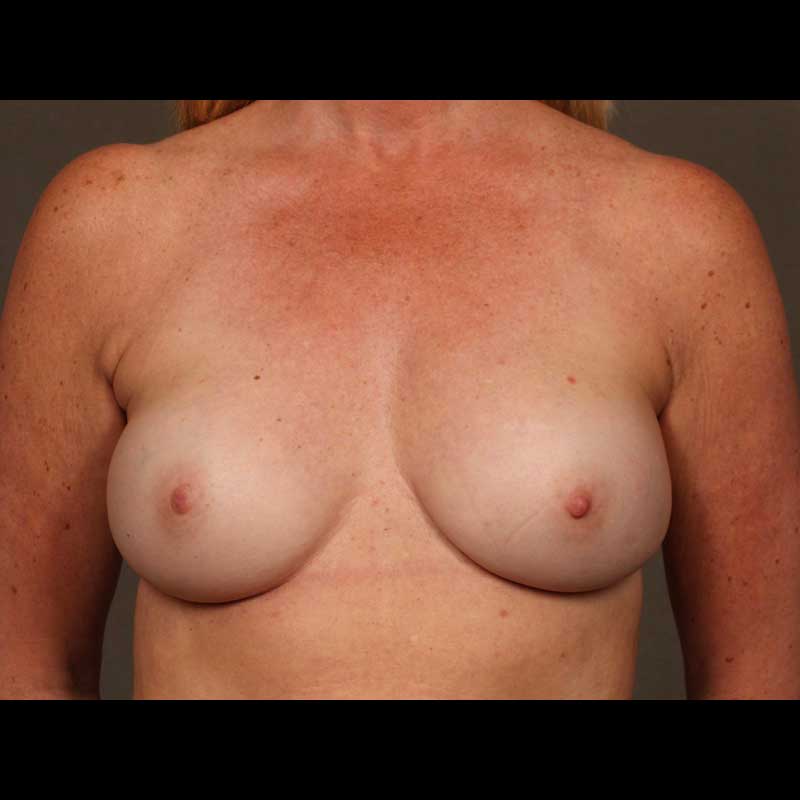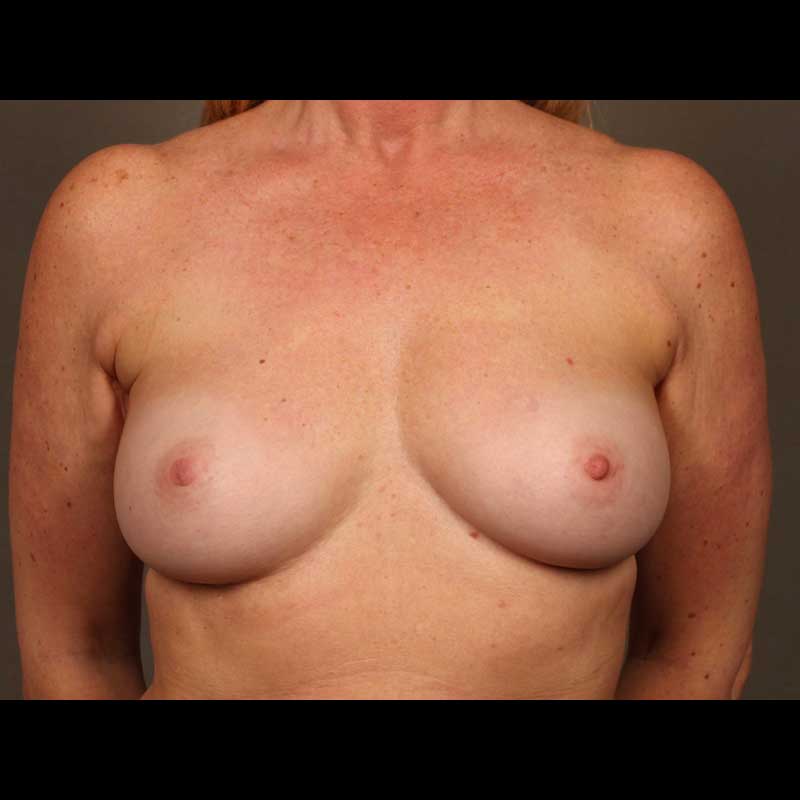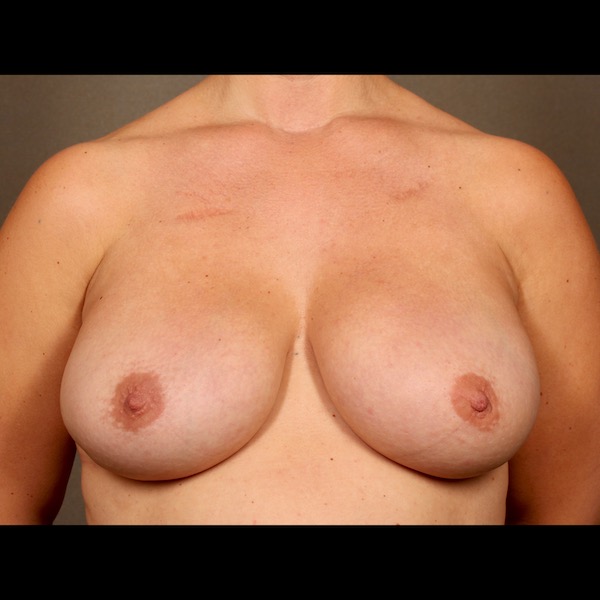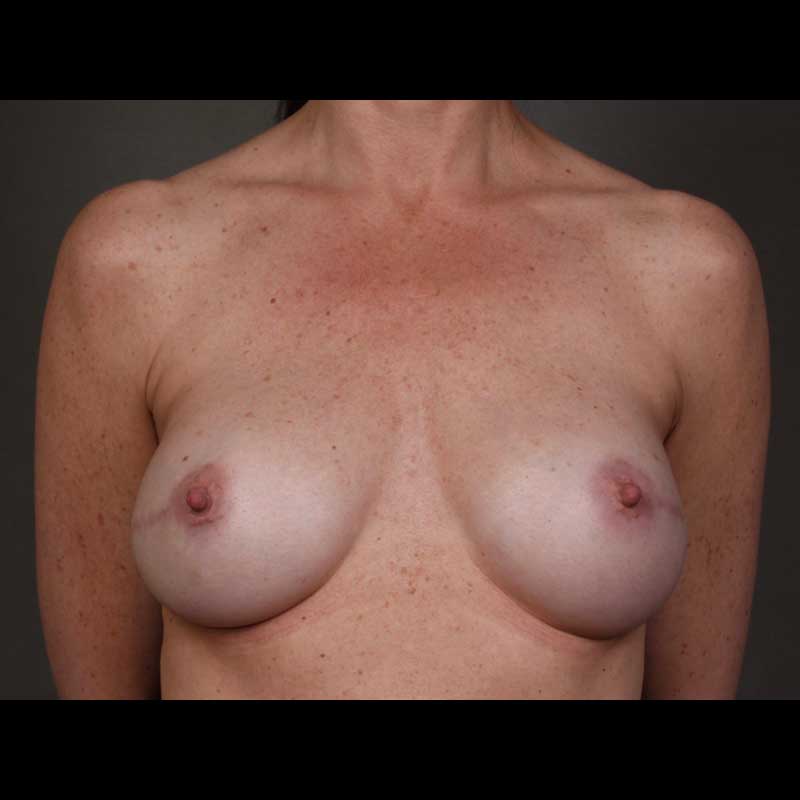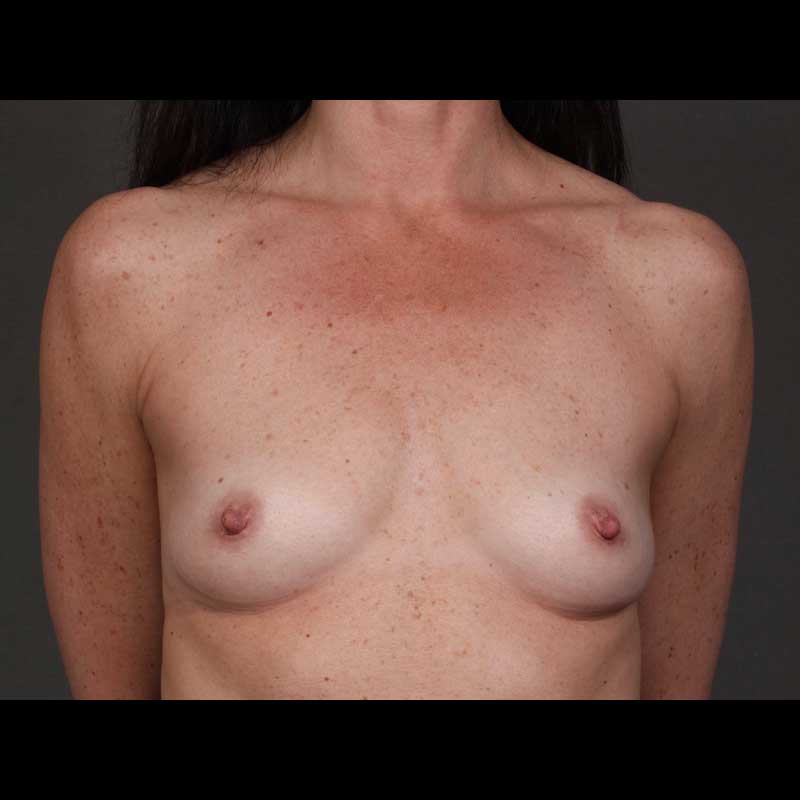Summary
In the past, implants were always placed in the subpectoral position under the pectoralis muscle (UTM) at the time of implant breast reconstruction. This type of placement can cause feelings of tightness for some women. In addition, any pectoralis muscle movement can result in unsightly and uncomfortable implant animation.
If you have had breast reconstruction with subpectoral implants, it may be possible for you to have your implants moved into a more comfortable and natural prepectoral position over the muscle (OTM). The surgeons at NYBRA Plastic Surgery were among the first in the nation to routinely perform this type of surgery.
Procedure Details
- Breast skin is separated from the pectoralis muscle and the subpectoral breast implant is removed
- The pectoralis muscle is reattached to its original position on the chest wall
- The breast implant is then placed in a prepectoral position on top of the muscle
- Soft tissue support is provided with an acellular dermal matrix over the implant
Risks & Benefits
Once breast implants are moved in front of the pectoralis muscle, there is less soft tissue covering the implants, increasing the risk of skin rippling. The potential for visible implant rippling can be minimized by using more cohesive gel breast implants. In some cases, revision procedures, such as fat grafting, can also be helpful.
Moving breast implants from a subpectoral to a prepectoral position can result in a transformative positive change. With implants in a more comfortable and natural position in front of the pectoralis muscle there is less tightness and implant animation can be eliminated.
Frequently Asked Questions
What is the recovery like after prepectoral implant conversion?
Converting breast implants from a subpectoral to a prepectoral position is done as an outpatient procedure. Recovery is similar to most outpatient breast revision procedures. Many patients feel more comfortable immediately after surgery, once the implants are over the pectoralis muscle.
I had radiation after mastectomy and subpectoral implant breast reconstruction. My radiated implant feels very tight and uncomfortable. Can moving my implant to a prepectoral position help?
Unfortunately, this can be difficult to do after radiation. A much better option to help correct radiation related problems is to convert the implant reconstruction to a flap reconstruction. In this situation, the implant would be removed, the pectoralis muscle would be reattached to the chest wall, and the flap used for breast reconstruction would be placed over the muscle.
